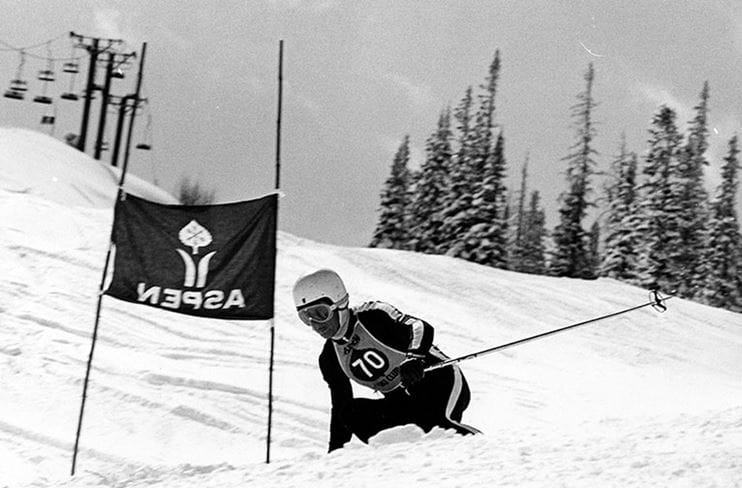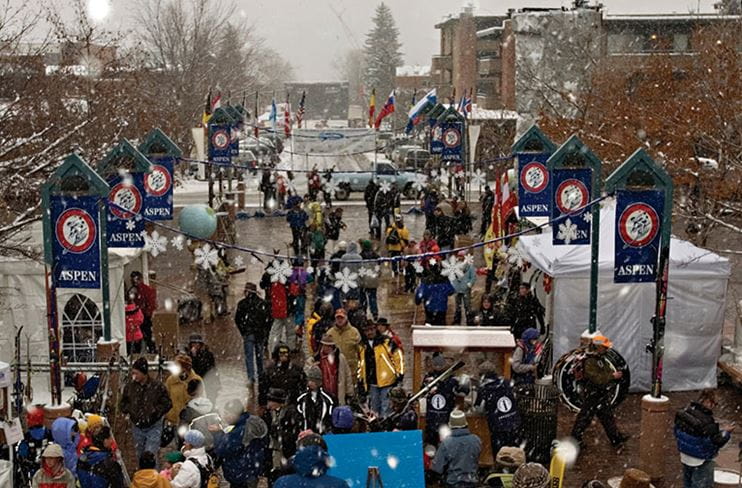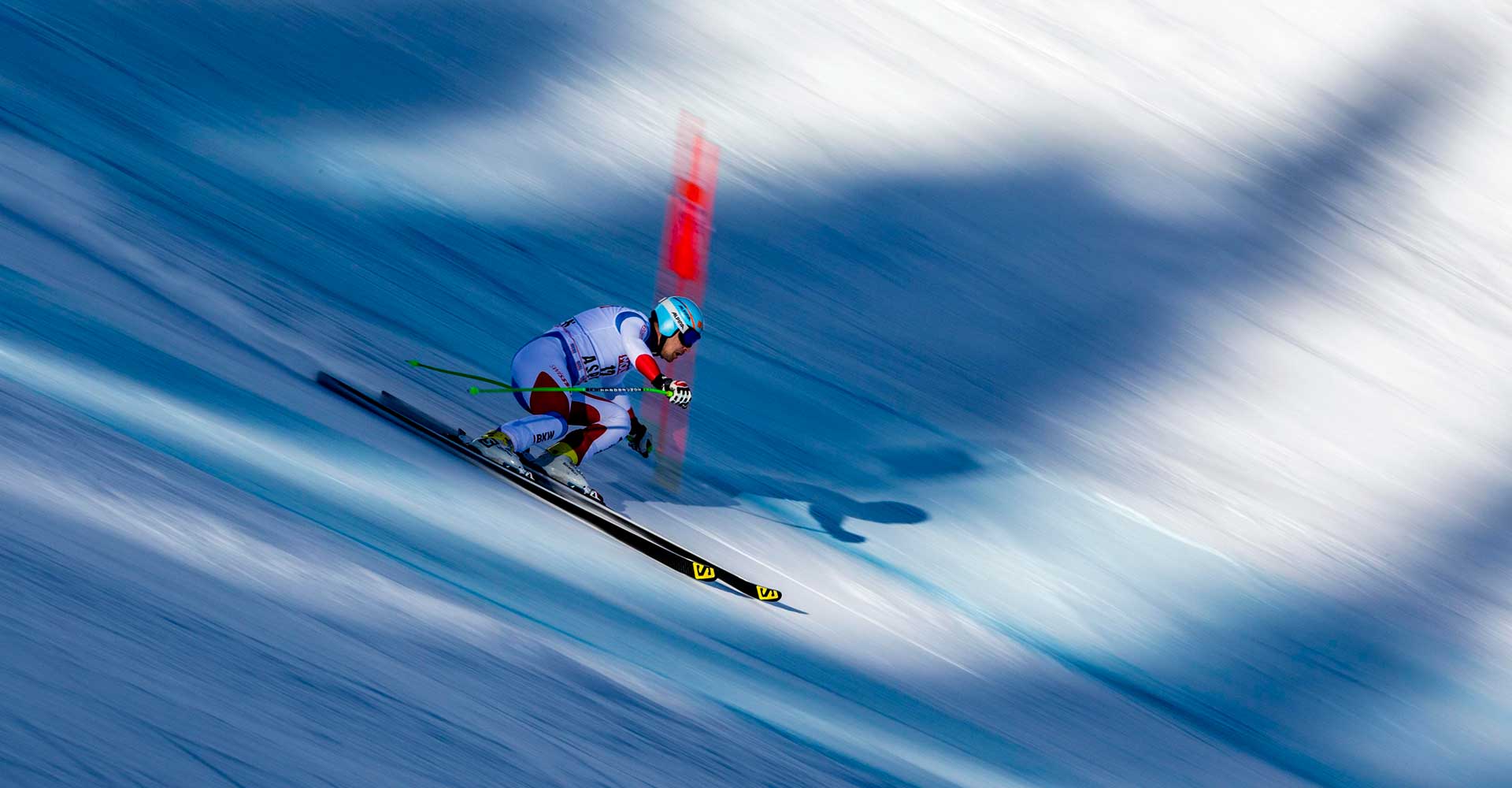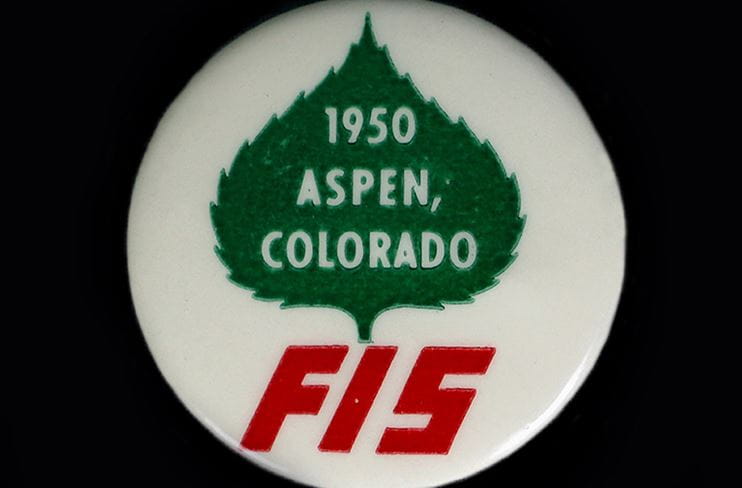Forging the Fastest in Aspen
Celebrating a small town’s legacy, steeped in alpine racing.

Published January 2023, Updated October 2023
When the best male ski racers in the world come to Aspen Snowmass this spring to compete in the Audi FIS World Cup downhill and super-G races, they will write the next high-speed chapters in Aspen’s decades-long story of ski racing. That tale dates all the way back to 1937, when Aspen Mountain hosted its first race, and continued in 1941, when the US National Championships were held here. But Aspen’s reputation as a truly great ski racing venue began to take shape in earnest in 1946 with the advent of the Roch Cup.
André Roch, a Swiss mountaineer and avalanche expert who helped plot the development of Aspen Mountain, had arrived in 1936 and began giving free ski lessons—helping to awaken the sleepy, post-silver-boom mining town. Hoping to attract tourism to the area, Roch suggested hosting a ski race featuring international talent.
To be successful, Roch told locals at the time that the course needed to be the real deal, because only the toughest lines would inspire the best alpine racers from across the globe to travel to the remote Roaring Fork Valley to compete. To satisfy that need, Roch and a team of local skiers who were unafraid and inspired to leave their mark on the town mountain—and who would go on to become the Aspen Valley Ski Club (AVSC)—spent the summers carving Corkscrew, a 1,000-foot-long, gully-like trail with precipitous steeps and sharp turns.
The work—and subsequent ski races—that André Roch and his crews kick started would get a big bounce of energy with the arrival of Aspen ski school director Friedl Pfeifer in 1945. Pfeifer took the Roch Cup, which was then the name of the silver trophy given to the winner of assorted races, and elevated it into an annual ski race that would share the Roch Cup name. Its growing status brought more races to the area—including the 1950 World Championship, the first alpine championship ever held outside Europe and a ski race that drew the world’s attention to Aspen as a ski destination like never before.


The Roch Cup was awarded in every possible manner: sometimes it was a giant slalom; sometimes it was a downhill. It morphed into different events as needed, including several National Championships as well as a qualifying race for the 1964 Olympics. Over the years, skiers from all over the world—from Norwegian legend Stein Eriksen (who won in 1954) to Swiss star Peter Lüscher (who won in 1979)—competed in the Roch Cup, which was held on Corkscrew and other steep descents on Aspen Mountain.
In 1967, the F.I.S. World Cup ski racing circuit was founded by U.S. Ski Team director and longtime Aspenite Bob Beattie, along with French Ski Team director Honoré Bonnet and Swiss journalist Serge Lang. The World Cup would formally tie Olympic-caliber ski racing to US ski resorts, and in 1968 the tour came to Aspen for the first time. Hotshot American Billy Kidd won the slalom, and the World Cup would remain a steady presence throughout the 1980s and 1990s, a period when the men’s downhill course—which winds down the face of Aspen Mountain and features 100-foot jumps, steep pitches, and technical turns, and a finish line visible from town—became known as one of the premier courses in the world. Dubbed “America’s Downhill” after American Bill Johnson’s huge win in 1986, the race is a “classic downhill,” according to former US Ski Team member and current AVSC coach Casey Puckett. “It’s really what this town was all about for a long time, and it still is.”
In 1970, Aspen began hosting the World Pro Ski Tour, a race series founded by Beattie as a livelier competitor to the World Cup he himself had founded only a few years before. Featuring dual-format racing that attracted the likes of Jean-Claude Killy and Spider Sabich, the tour delivered more drama and a rock-and-roll attitude that felt more akin to the spirit of the era than the buttoned-up World Cup.

Downhill skier at the Audi FIS World Cup at Aspen Mountain.
Women began racing World Cups in Aspen in 1976, and between 2000 and 2015, women’s World Cup races were held in Aspen every year other than 2003. In 2015, budding American phenom Mikaela Shiffrin won both slalom races, becoming the first American to win in Aspen since Tamara McKinney in 1981. Then, in 2017, Shiffrin went really big, becoming the first U.S. racer ever, man or woman, to secure the overall World Cup season title on American soil. It was the cherry on top of the weeklong 2017 World Cup Finals, the most significant week of ski racing Aspen has ever held.
Beyond the bold-faced World Cups, Aspen has hosted thousands of other races, from regional junior competitions to celebrity events—even the infamous 24 Hours of Aspen where alpine skiers continuously (and eventually, deliriously) lapped Ajax for an entire 24 hours.
“There’s so much ski racing history in Aspen,” says Steven Nyman, who at age 40 in 2023 was the US Ski Team’s most senior member. Notably, Nyman made the final run of his racing career at the 2023 FIS Ski Aspen World Cup on America's Downhill™. He was donning all denim, waving an American flag, and the crowd along the course cheered him on as he skied into retirement. “Aspen is a great town. I always loved racing here—whether it was a Roch Cup race or Nor Am. I was excited to come back and have my final race here, and I hope it remains a consistent part of the tour,” he added.
From a rope tow and wooden planks to decades of global greats shattering records (and sometimes their bodies), ski racing is all intricately and eclectically woven into the history of Aspen. Like the mountains that cradle this small but mighty town, the stories are vast—full of guts, glory, memorable personalities, and the stories that will eventually become legends.
You Might Also Like

